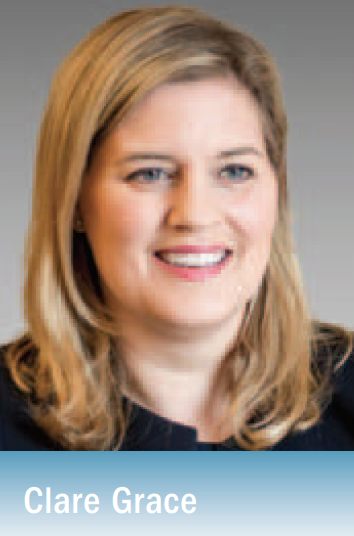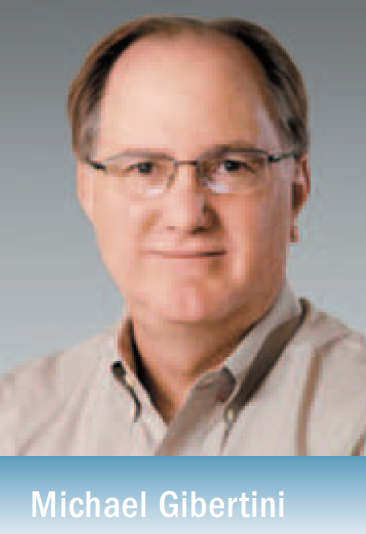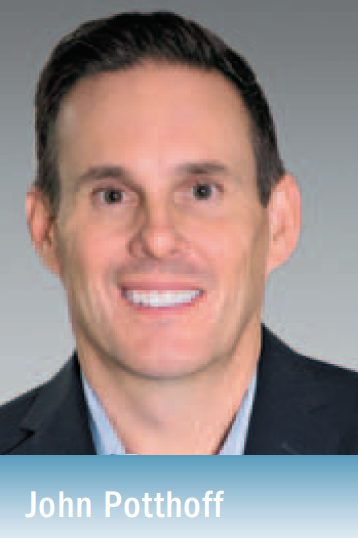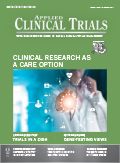Q&A: Expanding Clinical Research Access
Partnership focuses on integrating research into the care continuum.
Syneos Health and Elligo Health Research recently initiated a partnership on a system of accelerated research (SOAR). Here, Michael Gibertini, chief clinical innovation officer, and Clare Grace, VP of site and patient access, both with Syneos Health, and John Potthoff, CEO of Elligo Health Research, explain what the plan will entail.
Q: Can you talk about the goals of SOAR and what clinical research as a care option means to you?
GRACE: Traditionally, we have asked patients to travel to research sites to participate in clinical trials, placing a

heavy burden on the patient. By embedding clinical research into the care setting, we are able to bring the research directly to patients at their physician’s office. There’s a huge benefit to integrating research into the care continuum because patients are in their sphere of comfort, familiarity, and trust.
This SOAR approach also supports physicians and the care infrastructure. Not only does it support the cost of delivering that care, but it also enables physicians to be at the forefront of research and medicine. That’s attractive to many healthcare practitioners and physicians.
GIBERTINI: Syneos and Elligo are in the early stages of our collaboration, which will span developing the SOAR system and testing the model with a study. It will include support from a clinical research and regulatory standpoint, allowing for a centralized research effort. By reaching out to community physicians and engaging them around their patients, we will bring patients who don’t typically participate in research into a research project.
POTTHOFF: All patients should have the option to participate in a clinical trial matching their healthcare needs while under the care of their own, trusted physician. Elligo provides infrastructure, technology, and expertise to physicians, which helps provide patients access to trials. SOAR is a further extension of this model that facilitates reach to more physicians and patients. In this model, we do not activate study sites-we activate a central system of research that controls the research process for each patient through their local physician.
Q: How does SOAR contribute to these initiatives?

GIBERTINI: SOAR will allow patients with serious and complex diseases to participate in research in the comfort of their own physicians’ office, with access to specialty care and the assessments that go into clinical research. The advantage is, they won’t have to go anywhere else. SOAR enables specialized treatment, supporting physicians and the system to deliver that care.
POTTHOFF: The new system of research democratizes participation by removing both the administrative burdens and the physical barriers that impede patient and physician participation. We seek to keep the trusted patient-physician relationship intact while allowing participation by patients from virtually anywhere in the country.
Q: What are the key benefits of SOAR to stakeholders?
GIBERTINI: Bringing clinical research to underrepresented populations through community medical practices-evolving from a location-bound approach to a centrally managed approach-redefines the clinical trial site footprint. Our partnership will leverage electronic heath record access and systems to drive new research concepts and innovation, benefiting patients who don’t typically participate by providing more access to cutting-edge care. This effort should improve quality, reduce timelines, and save costs.
POTTHOFF: Patients participating in a clinical trial often receive a more thorough evaluation of their health

needs and more time with their healthcare providers than those who don’t participate.
Physicians have more resources to evaluate their patients and better access to information. When clinical research is integrated into the healthcare environment, patients have the ability to make a treatment decision from options that include both standard clinical care and clinical research. Furthermore, the model will improve patient retention and protocol compliance, thereby driving advances in clinical research.
Q: How are you reaching patients to make research as a care option viable?
POTTHOFF: Patients in real-world healthcare often have more complete histories and medical records than patients recruited into a clinical trial previously unknown to the physician. And you can’t get more real-world than actual healthcare practices. Using healthcare data, we can detect patients who match study criteria at a particular physician practice, all in a de-identified, HIPAA-compliant way.
Physicians are fully capable and interested in the medicine of a clinical trial. Under the framework of a central research system, there is no administrative burden or added cost for the physician to offer clinical research to a patient. As an industry, we also need to make it easier to learn about available trials and be responsive to patients and physicians who may be seeking information.
Q: Industrywide, what are the biggest challenges to fully integrating clinical research as a care option?
GRACE: It really depends on the trial, the patient, the geography, and a multitude of other considerations. Awareness is one. Many physicians and healthcare practitioners aren’t as aware of current research, what research is about, and how to conduct it effectively.
There’s also the operational challenge of integrating into a site that has no research experience. There are different monitoring requirements, needs, and oversight for sites that don’t have SOPs.
For example, if you have a rare disease or oncology trial, the patient/physician relationship is very intense over a long period of time, and it is quite contained. It’s a very specific relationship. Whereas if you’re looking at research in primary care, the relationship is more fluid and transactional. You must take that into account when you recruit patients and physicians to participate; in most cases, they’re research-naïve, so support is required to ensure the site operates effectively.
POTTHOFF: I think the biggest challenge is geographic adversity: physicians treating smaller numbers of patients are not selected as clinical trial sites due to low expected enrollment compared to the cost of activating that site. Central research systems utilizing advanced technology and telehealth remove this barrier. It is our goal to make it easier for patients to participate in clinical research.
-Staff Report
